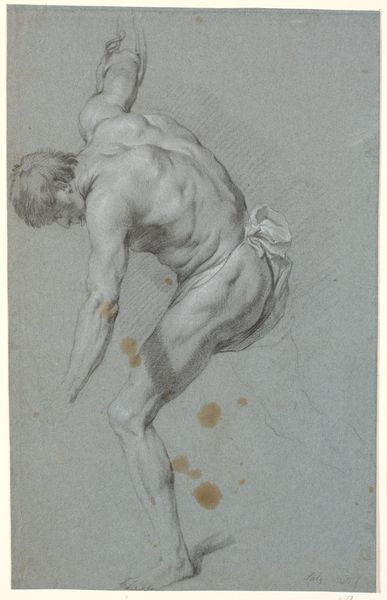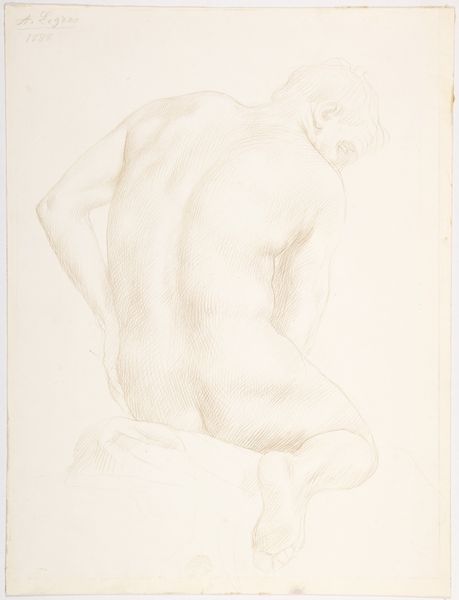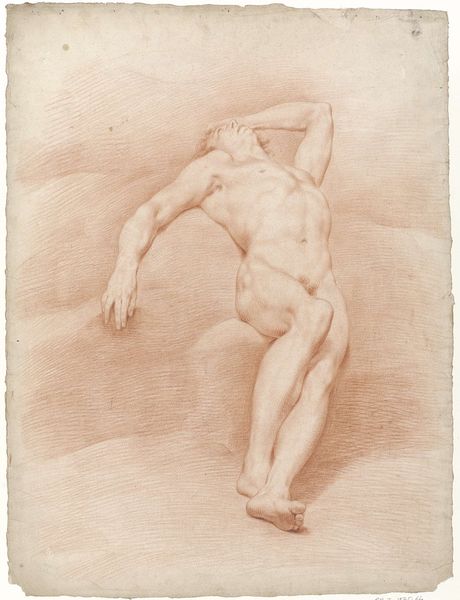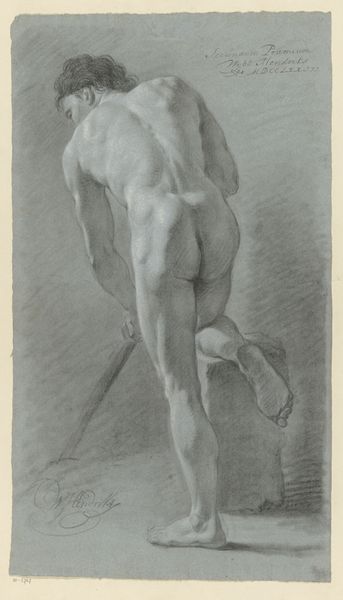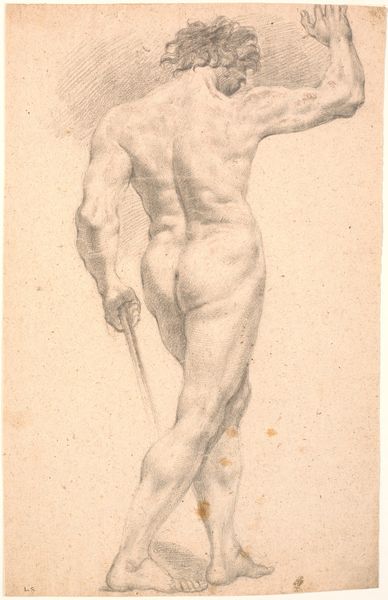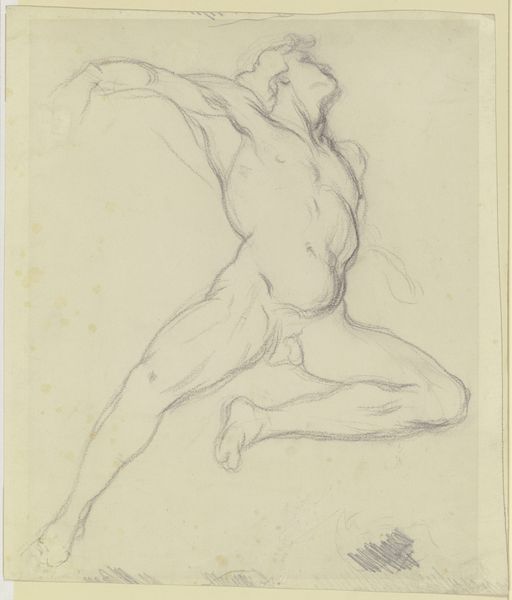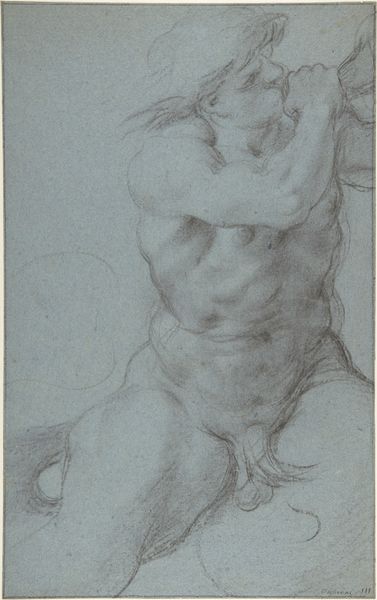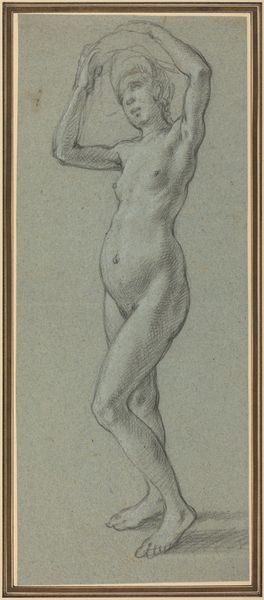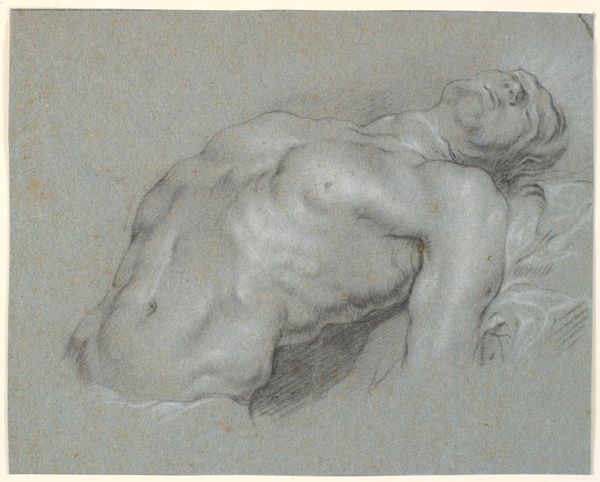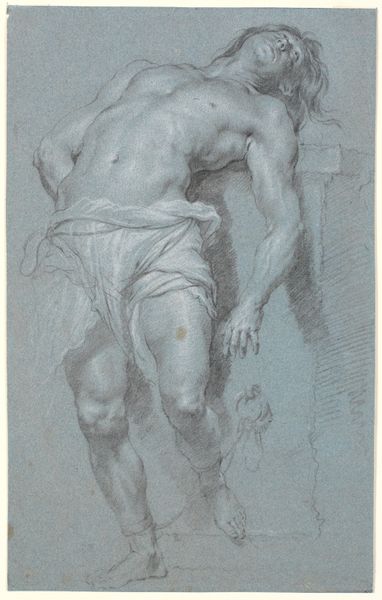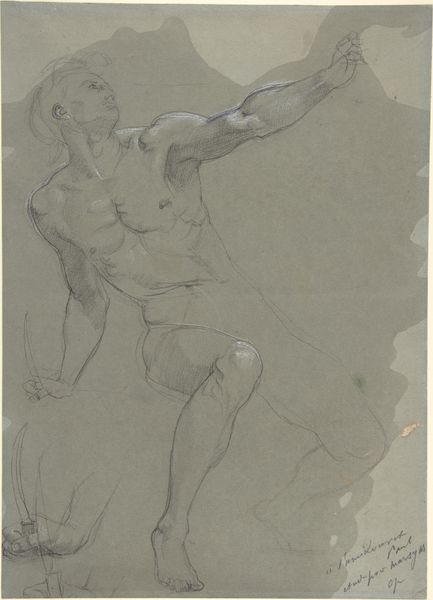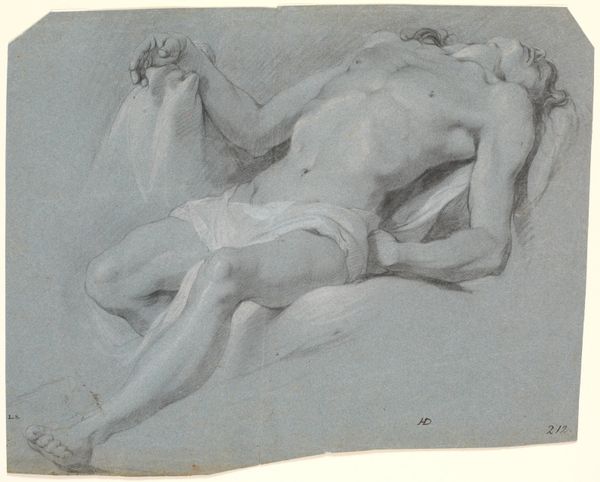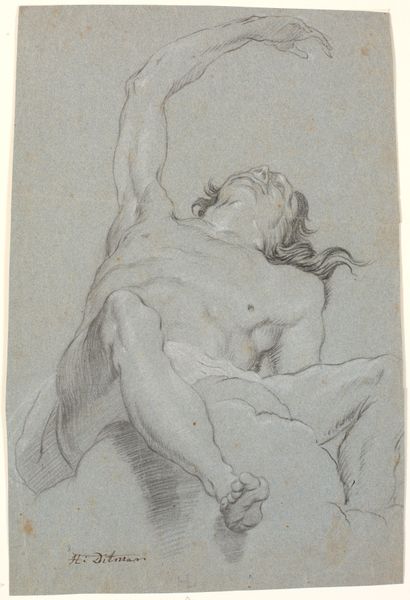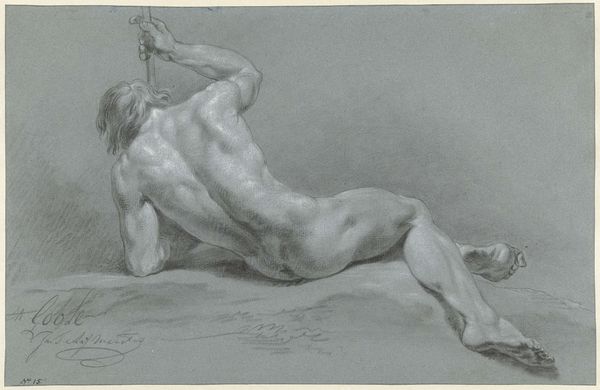
drawing, dry-media, pencil
#
drawing
#
pencil sketch
#
dry-media
#
pencil drawing
#
pencil
#
portrait drawing
#
nude
Editor: Here we have a pencil drawing titled "Foroverb\u00f8jet mandlig model, set fra ryggen", or "Bent-over Male Model, Seen from the Back", created sometime between 1625 and 1677 by Heinrich Dittmers. The drawing has an unfinished quality to it that I find really compelling. What strikes you most about it? Curator: What immediately grabs my attention is its function within the artistic ecosystem of the 17th century. These kinds of nude studies were critical for artists. It represents the academic turn of art and served as training to depict the human form accurately, a crucial skill in portraying historical, mythological, or religious narratives that were popular in the era. Who had access to create these kinds of artworks at this time, and who did not? Editor: So, you're saying this drawing is less about the individual and more about art education at the time? I hadn't considered that aspect. Curator: Exactly! This period saw a rise in art academies, formalizing artistic training. Figures like this provided a shared visual language, allowing artists to communicate specific messages through their work. Do you notice how much detail there is of the back in comparison to the head and face, or lack thereof? Editor: I do now. This suggests a focus on the anatomical understanding of the body itself, rather than the individual identity. Was there anything radical about this artwork in its time? Curator: The act of drawing from a live model was radical! It shifted art from pure invention to observation and interpretation. This opened up possibilities for naturalism, but simultaneously created hierarchies about whose bodies were deemed worthy of artistic representation. The nude male form has historically been reserved for expressing status, power, or idealized beauty. Editor: That’s fascinating! I had just assumed it was a simple study, but I now see it reveals a great deal about artistic practices and power dynamics of the era. Thanks for this new insight! Curator: Indeed! Examining it through a social and historical lens gives us a much deeper understanding of not just the art itself, but the systems in which it was produced and valued.
Comments
No comments
Be the first to comment and join the conversation on the ultimate creative platform.
